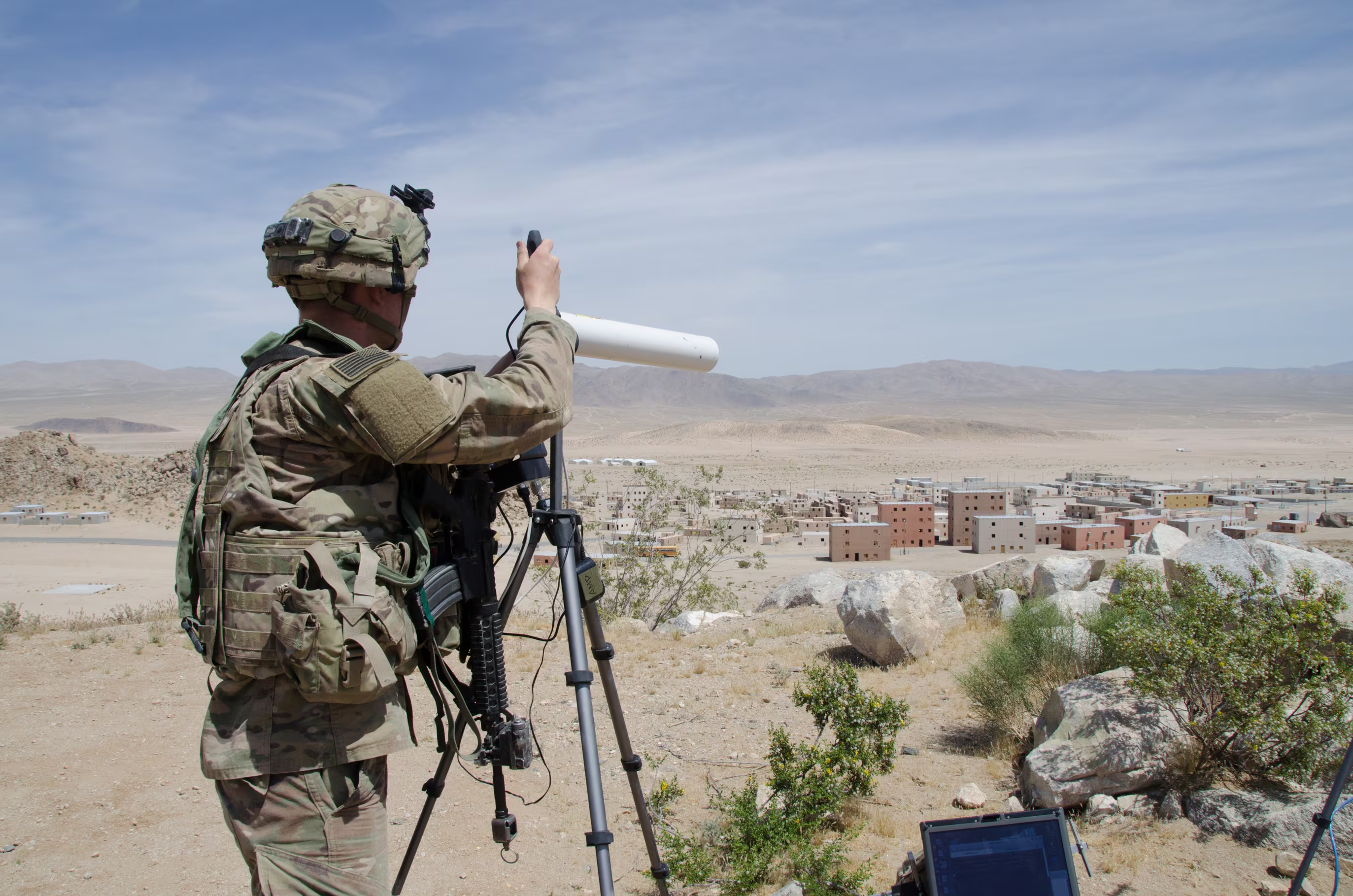WASHINGTON — The Army has created a new entity within is operations and plans directorate, G-3/5/7, to focus on non-physical capabilities and better ready the service for multidomain operations.
The new directorate, Department of the Army’s Management Office-Strategic Operations (DAMO-SO), was created about six months ago and replaces DAMO-CY, which focused primarily on cyberspace operations. The organization now encompasses cyber, electronic warfare, information operations, space, enterprise IT networks, tactical communications networks, data architectures and artificial intelligence.
“We’re an organization that pulls together a lot of the multidomain operating capabilities. Things like cyber, electronic warfare, information operations, space,” Brig. Gen. Martin Klein, director of DAMO-SO, told C4ISRNET in a July 20 interview. “We’re also bringing into the directorate the capabilities of really underwriting the Army’s ability to digitally transform into this new era … Part of what we’ve been asked to do is underwrite multidomain operations and then to digitally enable our warfighting systems.”
The office will serve as the Army point of contact for joint initiatives with the other services, namely Joint All-Domain Command and Control (JADC2).
Klein said his organization is the Army’s lead entity for the JADC2 cross functional team. The team will also work with the Air Force in experimenting with its Advanced Battle Management System, which is considered an early possibility for the JADC2 program.
“One of the tenets of multidomain operations is the recognition that we fight and win as a joint force,” he said. “A lot of what I do, frankly, is develop capabilities with the Army but coordinate those capabilities throughout our sister services to make sure that we can fight and win certainly in the competition space … in conflict if it should arise.”
Additionally, the team will work to standardize data and data architectures within the Army and joint force to ensure interoperability.
But a key distinction between the predecessor organization and the newly formed office was the importance of space, Klein said.
“As the Army looked at the Multidomain Task Force and, in particular, how to win in multidomain contested operations, we came to the realization of how interdependent our space-based capabilities are,” he explained.
One of the key premises to the office was the notion of better posturing the Army in the competition phase against near peer adversaries that are seeking to exploit the so-called gray zone below the threshold of armed conflict.
The new office works as an integrator across the Army – especially within the G-3/5/7 – of how offices can better organize, restructure or resource these non-kinetic capabilities. Along with Army Futures Command, it also looks at emerging capabilities and, with the various program executive offices, examines what capabilities are needed now.
“What we primarily do is we address this capability through a policy lens, but we also go forward and do resourcing … we work with a strategy team here in the Army G-3/5/7 to make sure that competition and conflict strategies are deconflicted and we certainly work without operational folks … to make sure when we go through a plan and when we mobilize … that we have the right organizations within our cyber, electronic warfare and our information operations space,” Klein said.
Klein said he was tasked to keep his finger on the pulse of the emerging multidomain concept as others across the Army look at how the Army will fight in 2028 and beyond. In doing so, his outfit will make recommendations regarding force structure changes or capabilities that could be endorsed by the Army.
“End to end, we’re developing a desired capability that our chief and that our secretary of defense need in order to fight and win against a near peer adversary,” he said.
DAMO-SO will participate in upcoming exercises and advise on combat training center rotations to ensure units are defending against these non-kinetic tools that can cripple communications. One exercise includes the forthcoming Project Convergence, a data sharing test and experiment to take place in the fall.
“It’s really bringing long range precision fires, weapon systems and some of our modernization efforts together under the rubric of a data enabled cloud orchestrated system to be able to do the experimentation necessary,” he said.
Ultimately, Klein said he hopes the office will provide a great benefit.
“As that lead integrator, we can bring multiple perspectives from multiple different vantage points all the way form strategic down to the tactical to make sure that 0 as we’re developing these capabilities, as we’re exercising and as we’re coming up with new things of use in the existing systems - we get back best practices,” he said.
Mark Pomerleau is a reporter for C4ISRNET, covering information warfare and cyberspace.








